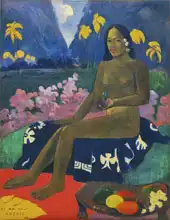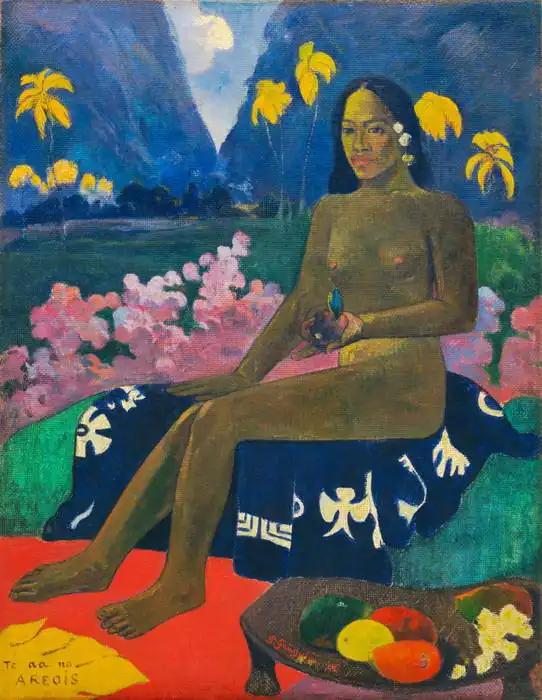About this finishing
Print. The image is printed on the top quality 10-ink HP Z9PS printer on HP matte 270 g / m2 paper. You can choose any size to an accuracy of 1 cm. A margin of 5 cm around the image is added to the size of the motif.


You can find a detailed description about our finishings
here.
Te aa no areois
Paul Gauguin created a painting called "Te aa no areois," which can be loosely translated as "Land of the Areoi" or "Land of the Merry." Gauguin painted this work during his stay in Tahiti, where he traveled in the 19th century, and it is a typical example of his exotic and colorful paintings inspired by the Polynesian environment. The rich colors and specific style of Gauguin are also characteristic in this work. Gauguin uses rich, unusual colors that resemble a tropical environment. Dark greens, yellows, reds and blues form a vibrant palette. The central motif is the figures of the areoi, which in Tahitian culture was a group of
people associated with ritual dances and revelry. Gauguin depicts them in typical figures that resemble statues or masks. Gauguin often incorporated
symbolism and mystical elements into his works. In "Te aa no areois" you can observe Gauguin's interpretation of Tahitian culture and his personal visionary approach to art. The work creates the impression of a ritualistic setting, with areoi figures depicted in a kind of dance or ritual movement. Gauguin often simplified forms and shapes in his paintings. Figures and elements are stylized and have a decorative character. The surrounding
landscape can be recognized by characteristic Tahitian features such as palm trees and exotic flora.
Prevailing color of this fine art print is vivid and its shape is portrait. This image is printed on demand - you can choose material, size and finishing.
Eugène Henri Paul Gauguin (1848-1903). French painter and a leading figure of
Postimpressionism. His experiments with colour strongly influenced modern art of the early 20th century. As one of the first, he subscribed to primitivism: simplified and exaggerated contours of the body, strong and contrasting colours. This artistic style was partly due his admiration for the art of the primitive cultures of Africa, Micronesia and North American Indians. Gauguin himself had the opportunity to experience life on Tahiti, where he resided from 1891 until his death. It was in Polynesia that he created his most famous paintings.


